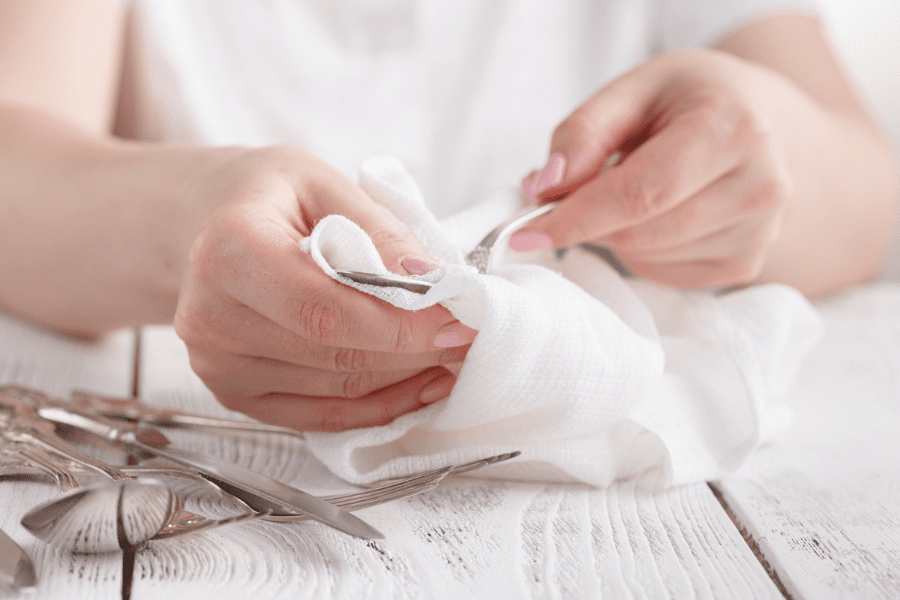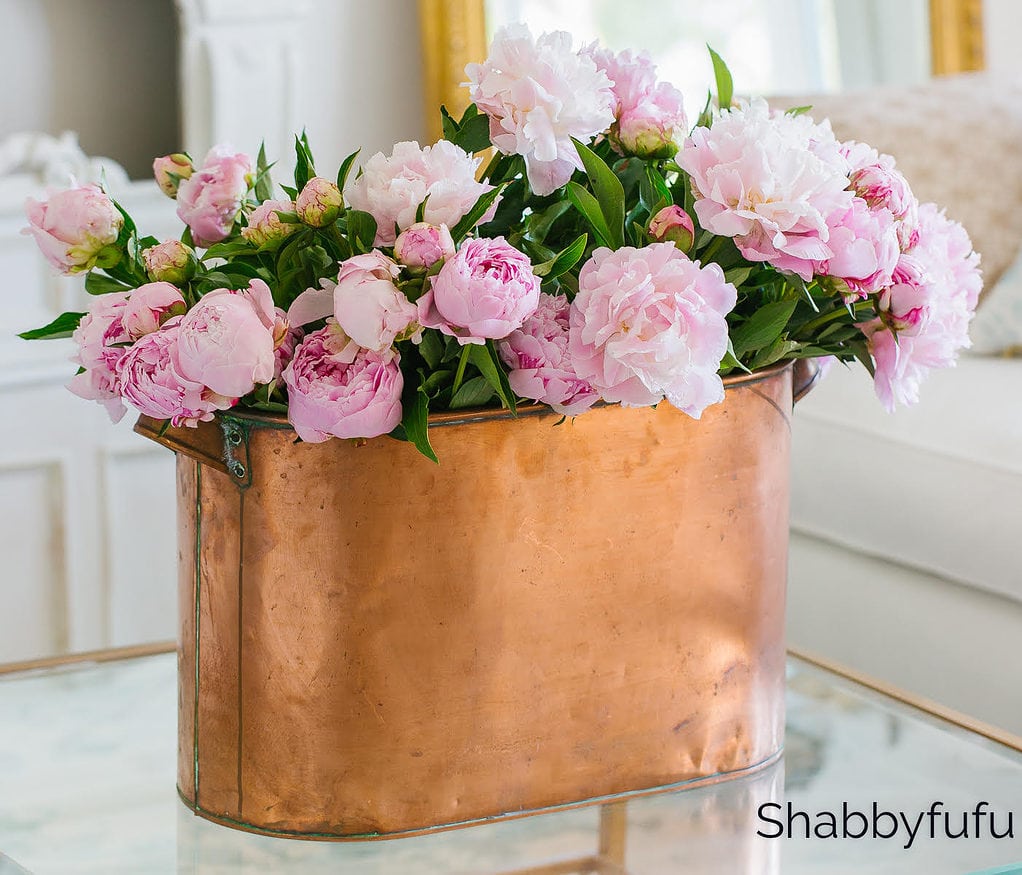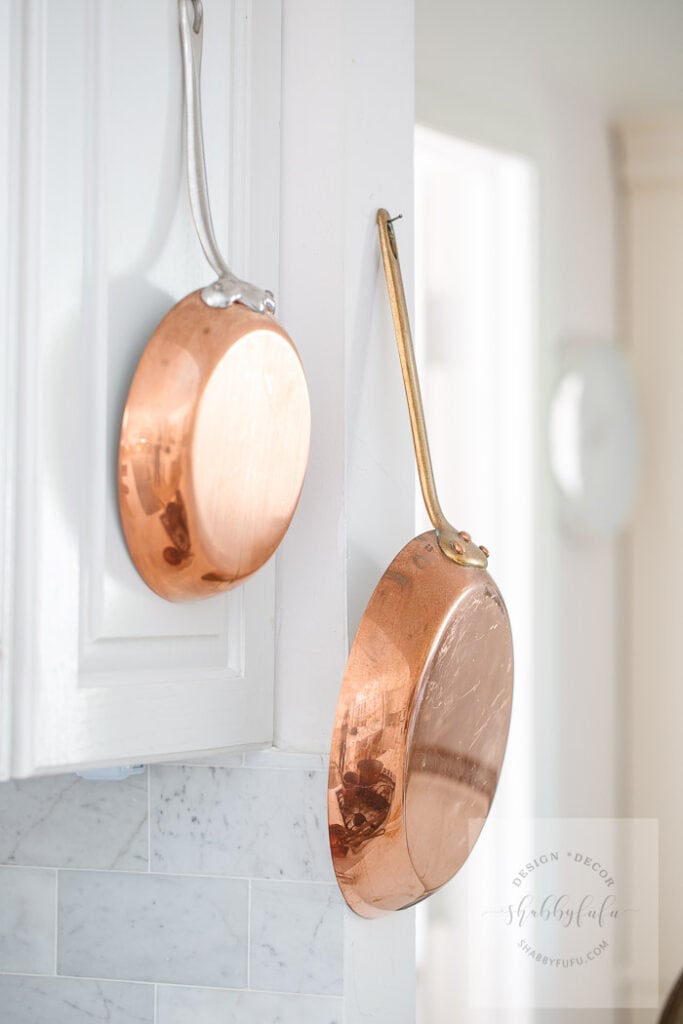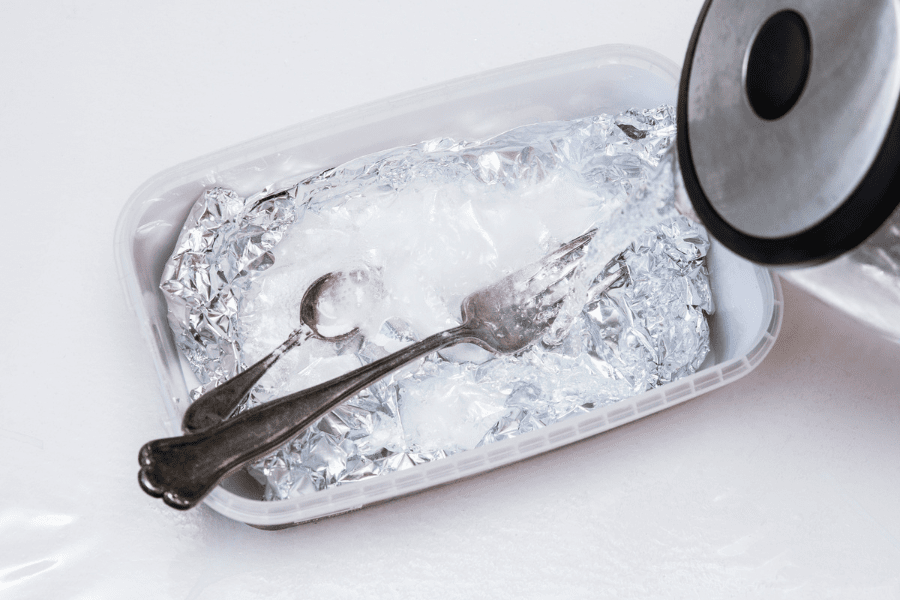How To Clean Tarnish: Keep Your Silver, Brass and Copper Tarnish Free
Bring back the shine! Give your tarnished silver, brass, and copper pieces new life with these tips on how to clean tarnish effectively. All you need is the right tools, a little bit of patience, and these handy tips!
If you’re like me and love finding hidden gems in thrift stores and cherish keeping your family heirlooms in good shape, you’ve probably seen tarnish stains. I’m sure we can all agree it’s not a pretty sight! The good news is there’re a few simple ways to clean tarnish from silver, brass, and copper.
In this post, I’m sharing some techniques, and DIY recipes along with some of my favorite tips to clean tarnish from your silver and brass objects and make them shine again! Plus, some advice on how to avoid future tarnish stains.
Let’s start, shall we?
How To Clean Tarnish: Silver, Brass, and Copper
Clean tarnish with a professional gentle polish:
We’ll start with the most conservative option. If you’re not comfortable dipping your toes into DIY methods, start with the simplest way to remove tarnish from silver, brass, and copper pieces. Get a professional polish!
Depending on the item you’re working with, you need to get a polish specifically made for the metal type you working with, whether that’s silver, brass, or copper. For copper and brass, my favorite is the Bar Keeper’s Friend. For delicate silver pieces, Hagerty Silversmiths’s Spray Polish is good. My go-to polishes over the years tend to be from Wrights. The Wright’s Silver Polish works wonders and is easy to use, as is the Wright’s Copper & Brass Cream Cleaner. Amazon sells this 2-pack with one of each of these cleaning polishes if you’d like to give them a try.
Why? Well, the chemical process needed to remove the tarnish is slightly different for each metal, so it’s important to keep that in mind when choosing the right polish. It’s also important to try and determine if your piece is plated or solid silver or brass. If the finish is thinly plated beware that after a handful or two of cleanings the finish may wear off completely. I’ve had this happen to me mostly with with several silver plate pieces purchased at estate sales.
If you have a lacquered piece, you should only clean it up with warm water and soap, as you could damage the lacquer surface easily.
Although most polishers have a similar process, it’s always a good idea to check the instructions on the polish instructions as it may differ from brand to brand.
You will need to apply the product to your object, let it sit for a few minutes, and then clean it off with a cloth. A t-shirt or piece of cotton fabric will work wonderfully for this step! I also like to use flour sack towels like you use for baking. Find those inexpensively here on Amazon.
Get a polishing cloth
I love this polishing cloth is my favorite because they work for gold, silver, brass, and copper!

But you don’t need anything fancy if you’re looking for a quick fix. A silver polishing cloth from the jewelry section at Walmart will work just fine! Wipe your item with the cloth and you’ll see how it quickly removes tarnish. Advice? Apply gentle pressure at first until you feel more comfortable.
You’ll notice the cloth turning almost black with residue at some point, and when this happens, don’t bother washing the cloth, because the water will remove the chemical compound that makes it work so effectively. Once it’s completely dirty, throw it away and get a new one.
Remember to use latex gloves when doing this. It’s not harmful at all not to wear them, but the cloth can turn your skin into an odd metallic blackish color that’s difficult to remove and may stain your clothes. Here are a few DIY methods you can use:
Now, keep in mind these are DIY options and although they work wonders, they may not be suitable for all your items. I would advise you to be careful if your working with a high-value piece.
Baking Soda and Water:
Create a paste mixing water and baking soda in a plastic or glass bowl (avoid using metallic containers) You want a thick consistency for this. Once you have it, apply a generous amount, covering all cracks and crannies of your item.
Once you have coated all the surfaces in this thick paste, take a soft cloth and rub the mixture into the tarnished areas. Try different pressures until you get the tarnish off.
Next, run your object under tap water and rinse off the paste. If there’s still paste in certain areas, remove it with the cloth until it’s shiny!
Water, baking soda, and aluminum foil for silver:
This is a simple and effective method that requires baking soda, aluminum foil, and hot water.
To start, take your aluminum foil and, with the shiny side facing up, line a non-metallic container. Then, add the baking soda and pour boiling water slowly over it.
Place your item in the container and let it soak for a few minutes. The tarnish will transfer from the silver to the aluminum foil, leaving your silver shiny and clean!
This DIY method to remove tarnish from brass:
Mix salt with a half cup of vinegar and add flour until the mixture becomes a paste. Then, rub it gently into the brass and leave for about ten minutes. After that, rinse with warm water and buff dry.
DIY recipe to clean tarnish from copper:
Ketchup. Yes, you heard that right! Ketchup works amazingly for brass as it has the acidity you need to get the tarnish off, but the creamy consistency stops the product from dripping and drying off.
Apply ketchup to your brass item and let it soak for 20 to 30 minutes.
You can use a Q-Tip or toothpick to work on those tarnished, difficult-to-reach crevices. After you let it soak, rinse it off and gently pat it dry with a soft cloth.
Other DIY options to clean tarnish:
Other options are more aggressive, but they come with the caveat of being more abrasive. As I mentioned before, these recipes work amazingly, but the abrasiveness can harm the surface of your item is delicate.
Toothpaste:
Toothpaste is a simple and inexpensive cleaner for silver. You can use most toothpaste, just avoid the gel ones as these are too aggressive and can harm the metal’s surface.
Apply a bit of toothpaste to a soft cloth and rub it onto the tarnished silver. Then, rinse the silver with water and pat it dry.
Avoid rubbing with too much pressure as the abrasiveness of the toothpaste can harm the metal’s surface.
Vinegar and baking soda:
Vinegar and baking soda is another budget-friendly recipe that you can use to bring back some of that shine! This mixture works great for copper and brass, as well as for silver.
You’ll need a bowl, white vinegar, baking soda, and a soft cloth. To start, place your brass piece in a bowl and cover it with white vinegar. Then, add a tablespoon of baking soda to the bowl. Here is where the magic happens! The concoction will start to fizz and remove the tarnish from the surface of your item.
Let the silver soak for a few minutes, then rinse it with water and dry it with a soft cloth.
Vinegar, salt, and baking soda:
The steps for this mixture are the same as the ones I mentioned above. But by adding salt, we make the mixture a bit stronger.
This DIY option would work great for very stubborn tarnish stains!
Aftercare – How To Keep Your Silver, Brass, and Copper Tarnish Free
- To keep your silver and brass items in good condition, learn how to care for them. Regular cleaning of your silver, brass, and copper objects can help to keep tarnish at bay before it has a chance to build up. You’ll need to clean them regularly using a gentle mixture of dish soap and warm water.
- Keep your silver, brass, and copper dry. If it gets wet, make sure to dry it completely.
- Oils, humidity, temperature changes… All these elements can cause tarnish your objects faster. So, ensure proper storage and don’t touch them too much when it’s not necessary, as even the oils from your skin’s hand can cause tarnish stains.
- Avoid exposure to harsh chemicals like chlorine, sulfur, and ammonia.
- Apply a protective coating or clear finish, depending on the item you’re dealing with. Additionally, some polishers come with a built-in chemical solution that protects the metal from the elements that cause tarnishes.
- Invest in some anti-tarnish flannel bags like these to store your silver flatware and collectible pieces.
By following these steps, you can help keep your silver, brass, and copper objects looking their best and tarnish-free for many years to come!





You mentioned using Bar Keeper’s Friend to clean metals, but not how or what metals. I like this cleaner and would like to know how to use it. Thanks, V
Hi Vivianne! I’ve used Bar Keeper’s Friend on both copper and brass but personally have not tried it on silver or silverplate. You wet a sponge and gently rub the finish and should see tarnish come off. Once finished make sure to dry with a soft cloth. Hope this helps
Thank you for these great ideas
My pleasure Gail!